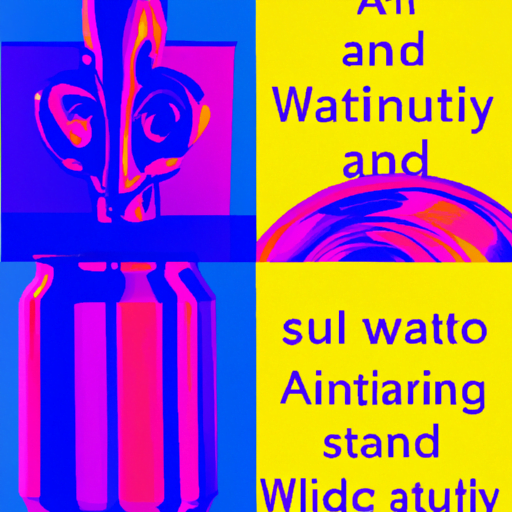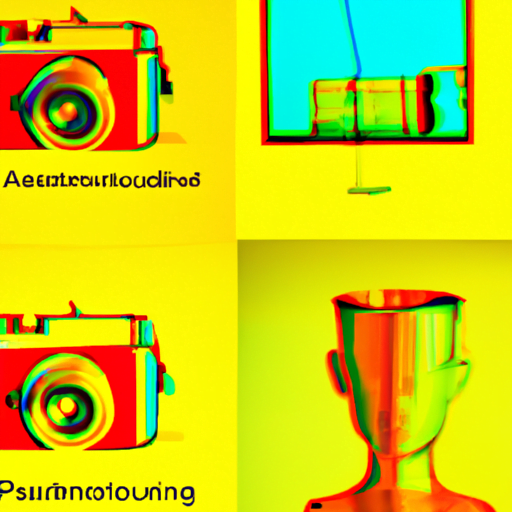
-
Table of Contents
Surrealism in Graphic Design: Unleashing the Subconscious Mind

Surrealism, an artistic movement that emerged in the early 20th century, sought to unleash the power of the subconscious mind. It aimed to challenge conventional thinking and explore the depths of human imagination. While surrealism is often associated with painting and literature, its influence can also be seen in the world of graphic design. In this article, we will delve into the world of surrealism in graphic design, exploring its origins, key characteristics, and the impact it has had on the field.
The Origins of Surrealism
Surrealism was officially founded in 1924 by the poet André Breton, who published the Surrealist Manifesto. The movement was heavily influenced by the psychoanalytic theories of Sigmund Freud, particularly his ideas about the unconscious mind and dream analysis. Surrealists believed that by tapping into the subconscious, they could reveal hidden truths and create art that went beyond the limitations of rational thought.
While surrealism initially gained popularity in the realms of painting and literature, it soon found its way into other art forms, including graphic design. Surrealist graphic design emerged as a way to challenge traditional design principles and create visually striking and thought-provoking compositions.
Key Characteristics of Surrealist Graphic Design
Surrealist graphic design is characterized by its dreamlike and often bizarre imagery. It combines unexpected elements, juxtaposing unrelated objects and creating unusual compositions. The aim is to create a sense of disorientation and surprise, challenging the viewer’s perception of reality.
Here are some key characteristics of surrealism in graphic design:
- Visual Metaphors: Surrealist graphic design often uses visual metaphors to convey complex ideas or emotions. By combining unrelated objects or using unexpected symbolism, designers can create powerful and thought-provoking imagery.
- Collage: Collage is a common technique used in surrealism. By cutting and pasting different elements together, designers can create new and unexpected compositions. This technique allows for the juxtaposition of unrelated objects, creating a sense of surprise and disorientation.
- Distorted Reality: Surrealist graphic design often distorts reality, creating a sense of unease or confusion. This can be achieved through the use of unusual perspectives, warped proportions, or distorted typography.
- Automatism: Automatism is a technique used by surrealists to tap into the subconscious mind. It involves creating art without conscious control, allowing the hand to move freely and create spontaneous and unexpected forms. In graphic design, automatism can be achieved through techniques such as doodling or freehand drawing.
Examples of Surrealist Graphic Design
There have been numerous examples of surrealism in graphic design throughout history. One notable example is the work of Salvador Dalí, a prominent surrealist artist who also dabbled in graphic design. His iconic melting clocks in “The Persistence of Memory” have become synonymous with surrealism and have been referenced in various graphic design works.
Another example is the album cover for Pink Floyd’s “The Dark Side of the Moon.” Designed by Storm Thorgerson and Aubrey Powell of the design studio Hipgnosis, the cover features a prism refracting light, creating a surreal and otherworldly effect. The design perfectly captures the mood and themes of the album, making it an iconic example of surrealism in graphic design.
The Impact of Surrealism in Graphic Design
Surrealism has had a profound impact on the field of graphic design. By challenging traditional design principles and embracing the power of the subconscious mind, surrealism has opened up new possibilities for designers to create visually striking and thought-provoking work.
Here are some ways in which surrealism has influenced graphic design:
- Breaking Conventions: Surrealism encourages designers to break free from conventional thinking and explore new ideas. By embracing the unexpected and the bizarre, designers can create unique and memorable designs that stand out from the crowd.
- Emotional Impact: Surrealist graphic design often evokes strong emotions and creates a lasting impact on the viewer. By tapping into the subconscious mind, designers can create designs that resonate on a deeper level and leave a lasting impression.
- Storytelling: Surrealism in graphic design allows designers to tell stories in unconventional ways. By combining unrelated elements and creating unexpected compositions, designers can create narratives that challenge the viewer’s perception and invite them to interpret the design in their own way.
- Brand Differentiation: Surrealism can be a powerful tool for brand differentiation. By embracing surrealistic elements in their designs, brands can stand out from their competitors and create a unique visual identity that captures the attention of their target audience.
Summary
Surrealism in graphic design is a powerful and influential movement that has challenged traditional design principles and unleashed the power of the subconscious mind. By combining unexpected elements, distorting reality, and embracing visual metaphors, designers can create visually striking and thought-provoking compositions that leave a lasting impact on the viewer. Surrealism has opened up new possibilities for designers to break free from conventions, evoke strong emotions, tell stories in unconventional ways, and differentiate brands. As the field of graphic design continues to evolve, surrealism remains a valuable source of inspiration and creativity.
